7 Sneaky Signs You’re Self-Sabotaging Without Realizing It
- Monique McNamara
- Sep 14
- 7 min read
Updated: Sep 15
You set the goal, you make the plan, you even clear your schedule... and then suddenly, you find yourself reorganizing your bookshelves or deep-diving into cat videos instead of doing the thing you actually want to do.
Sound familiar?
That gap between what you want and what you do? That might be self-sabotage at work.
Self-sabotage isn’t about being lazy or broken. It’s the patterns and habits that sneak in and quietly block your progress. You might be aiming for something important, a healthier routine, a career change, a more connected relationship, and yet, something inside pulls you away from it.
Sometimes it looks like procrastination. Other times, it shows up as perfectionism, avoidance, or that harsh inner critic whispering that you’re not good enough anyway.
Maybe you’ve been here more times than you’d like to admit. Maybe you’ve even blamed yourself for not having more willpower, or wondered why it feels so hard to follow through on the things that matter most to you.
But self-sabotage doesn’t mean you’re failing, it means you’re human. These habits usually start from a place of protection. Somewhere along the way, your brain learned that staying small or stepping back might keep you safe. It might shield you from disappointment, rejection, failure... even from success.
The beautiful part is, once you begin to recognize these patterns with compassion instead of criticism, change becomes possible. Bit by bit, with curiosity and care, you can begin to move differently.
Why We Do It (Even When We Want to Do Better)
You’d think wanting something badly enough would be enough to make it happen.
But the truth is, most of us aren’t blocked by a lack of desire, we’re blocked by fear.
Fear of failure. Fear of judgment. Fear of change. Even fear of success.
Sometimes the thing we say we want, a new relationship, a healthier lifestyle, a creative project, brushes up against some old belief we’re still holding. Beliefs like:
"I don’t deserve this."
"If I try and fail, I’ll look foolish."
"Good things don’t last."
"People will leave if I change."
These aren’t always conscious thoughts. They often live beneath the surface, showing up as hesitation, overthinking, or abandoning your plans just when you were getting close.
There’s also the part of your brain wired to keep you safe. If something feels uncertain or vulnerable, even if it’s exciting or positive, your brain might interpret it as risky. So instead of moving forward, you stall. You withdraw. You play small.
It’s a protective response, just not always a helpful one.
And the more these patterns repeat, the more they reinforce themselves. You might start believing the hesitation is proof that you’re incapable, that you’re not cut out for it. But really, it’s just a loop your nervous system has gotten stuck in.
Here’s the encouraging part: awareness is the first shift.
Once you start to notice these internal blockers, you can meet them with curiosity instead of criticism. You can gently begin to ask, "Is this fear trying to protect me, and is it still serving me?"
That question alone can open a new path forward.
💡 Want to take the first step toward understanding your own patterns with a little extra support?
You can download our free printable: Introduction to Self-Sabotaging
7 Sneaky Signs You’re Self-Sabotaging Without Realizing It
Self-sabotage can wear many disguises. Sometimes it’s loud and obvious, like missing a deadline or snapping at someone you care about. Other times, it’s sneaky, showing up as busyness or perfectionism that keeps you stuck in place.
Here are seven of the most common ways self-sabotage tends to show up:
1. Procrastination
You tell yourself you’ll do it later, but later never comes. Procrastination often hides anxiety, fear of failure, or overwhelm. Instead of starting, you scroll, snack, or suddenly decide the junk drawer must be organized.
2. Perfectionism
You set impossibly high standards and then beat yourself up for not meeting them. If you can’t do it perfectly, you tell yourself it’s not worth doing at all. This all-or-nothing thinking keeps you from making any progress at all.
3. Self-Criticism
Your inner voice turns harsh. You start to doubt every step you take and focus only on what’s wrong. This kind of inner dialogue doesn’t build motivation, it chips away at your confidence until you stop trying altogether.
4. Avoiding Change
Even when you know something needs to shift, you stay where it feels familiar. Change feels risky, so you put it off. You might stay in the job, the routine, the relationship that feels safe, even if it’s holding you back.
5. Poor Self-Care
You skip meals, cancel plans, say yes when you mean no, and pretend you’re fine when you’re clearly not. When your needs go unmet, it becomes even harder to show up for your goals and your growth.
6. Fear of Success
You might long for progress but feel a strange resistance when it finally shows up. Success can feel just as vulnerable as failure. If part of you fears the pressure, visibility, or expectations that come with it, you might unconsciously pull back right before things move forward.
7. Saying Yes When You Mean No
People-pleasing can be a hidden form of self-sabotage. You override your needs, take on too much, and leave no space for your own goals. It feels like being helpful, but it keeps your energy scattered and your priorities buried.
✨ Not ready for a full workbook yet? Start gently with our free printable:
What Happens When You Don’t Break the Pattern
When self-sabotage becomes your go-to reaction, it doesn’t just stall your progress, it starts to shape how you see yourself.
You begin to question your abilities. You feel stuck, frustrated, and maybe even ashamed. And each time you abandon a goal or ignore your needs, that cycle of self-doubt grows stronger.
It can quietly affect your relationships, your sense of purpose, and your confidence. You might:
Set goals but never follow through
Pull away from opportunities that matter to you
Keep choosing the safe route even when you feel called to stretch
Feel emotionally drained or burnt out
Start believing you're simply not the kind of person who can change
But it is possible.
Recognizing how self-sabotage has been showing up in your life is a powerful first step. And choosing to do something different, even something small, is how you start reclaiming your momentum.
How to Start Getting Out of Your Own Way
You don’t need a massive life overhaul to interrupt self-sabotaging habits. You just need a few gentle shifts, practiced with intention.
Here are a few places to begin:
1. Notice the pattern in the moment
Start by catching yourself in real time. Did you just open your phone for the fifth time in ten minutes instead of starting your task? Pause and name it. "Ah, I’m avoiding again because I’m overwhelmed."
2. Pick one habit to shift
Choose one behavior you’d like to gently shift. Not all of them. Just one. Maybe it’s checking in with yourself before you say yes to something. Or pausing to breathe before sending that email.
3. Give your inner critic a name
If that voice is constantly tearing you down, name it something silly or separate from yourself. It creates space. You are not that voice.
4. Practice self-compassion
This one’s not fluff. Learning to speak kindly to yourself, especially when you mess up or hesitate, changes the way your brain responds to mistakes. Try saying, "That was hard. I’m learning. It’s okay to be human."
5. Celebrate the tiniest wins
You brushed your teeth today when you didn’t feel like it? That counts. You replied to that one email you’ve been avoiding? That counts. Progress is made in moments like these.
The goal here isn’t perfection, it’s awareness. And with that awareness, you can begin to choose differently, not out of force, but out of care.
✨ Not ready for a full workbook yet? Start gently with our free printable:
A Gentle Guide to Help You Through It
You don’t have to figure all of this out on your own. If you’re looking for something to walk you through the messy middle, the habits, the thought patterns, the stuck places, the Self-Sabotage Workbook was created for exactly that.
This self-paced workbook includes 55 thoughtfully designed pages, available in US Letter, A4, and a fillable PDF version so you can print it out or complete it on your device.
Inside, you’ll find:
Self-reflection prompts to help you uncover your personal patterns
A breakdown of the 5 most common self-sabotage types and how they show up in daily life
Value-identifying worksheets so you can realign with what truly matters to you
Habit trackers and change planners to support intentional action
Cognitive reframing tools like “Put Your Thought on Trial” and the Daily Thought Challenge
Guided journaling pages to help you build self-awareness with kindness
Visual tools to map your satisfaction across different life areas, so you can spot what’s working and what’s quietly draining you
✨ Not ready for a full workbook yet? Start gently with our free printable: ➡️ Introduction to Self-Sabotaging It’s part of our Freebie Library, where you’ll also find tools like:
Practical resources you can reach for whenever you’re ready to take the next small step. |
Gentle Observation Self-sabotage often hides behind good intentions, perfectionism, or old fears wearing new faces. And even as you try to grow, that quiet voice can pull you back toward what feels familiar, even when it no longer fits.
But growth doesn’t require you to be harsh with yourself. It asks for honesty, tenderness, and a willingness to begin again - even if you’ve been here before.
So if today is one of those days where it feels like you’re getting in your own way, pause for a moment. Breathe. Offer yourself a little grace.
You’re not behind. You’re right on time.
You are noticing. You are learning. And that, truly, is where change begins.
P.S.
If you're already a member of the Therapy Resource Library, don't forget, you have access to this workbook inside your membership. Therapy Resource Library members, this is already waiting for you right here!
Not yet a member? You can learn more about the Therapy Resource Library and everything it includes right here.
P.P.S
And if you’re looking for something free and gentle to begin with, grab our printable: 🎁 Introduction to Self-Sabotaging













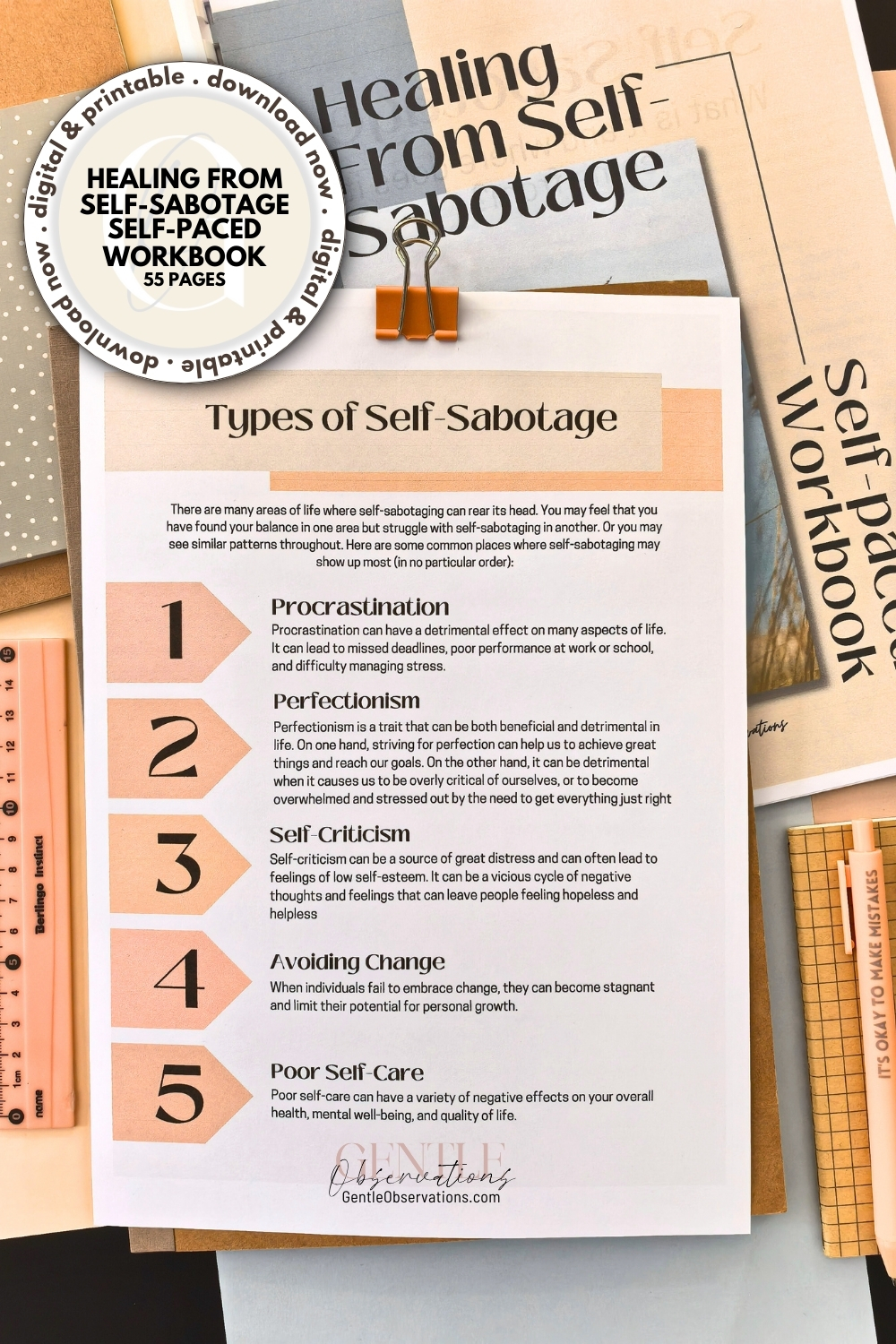

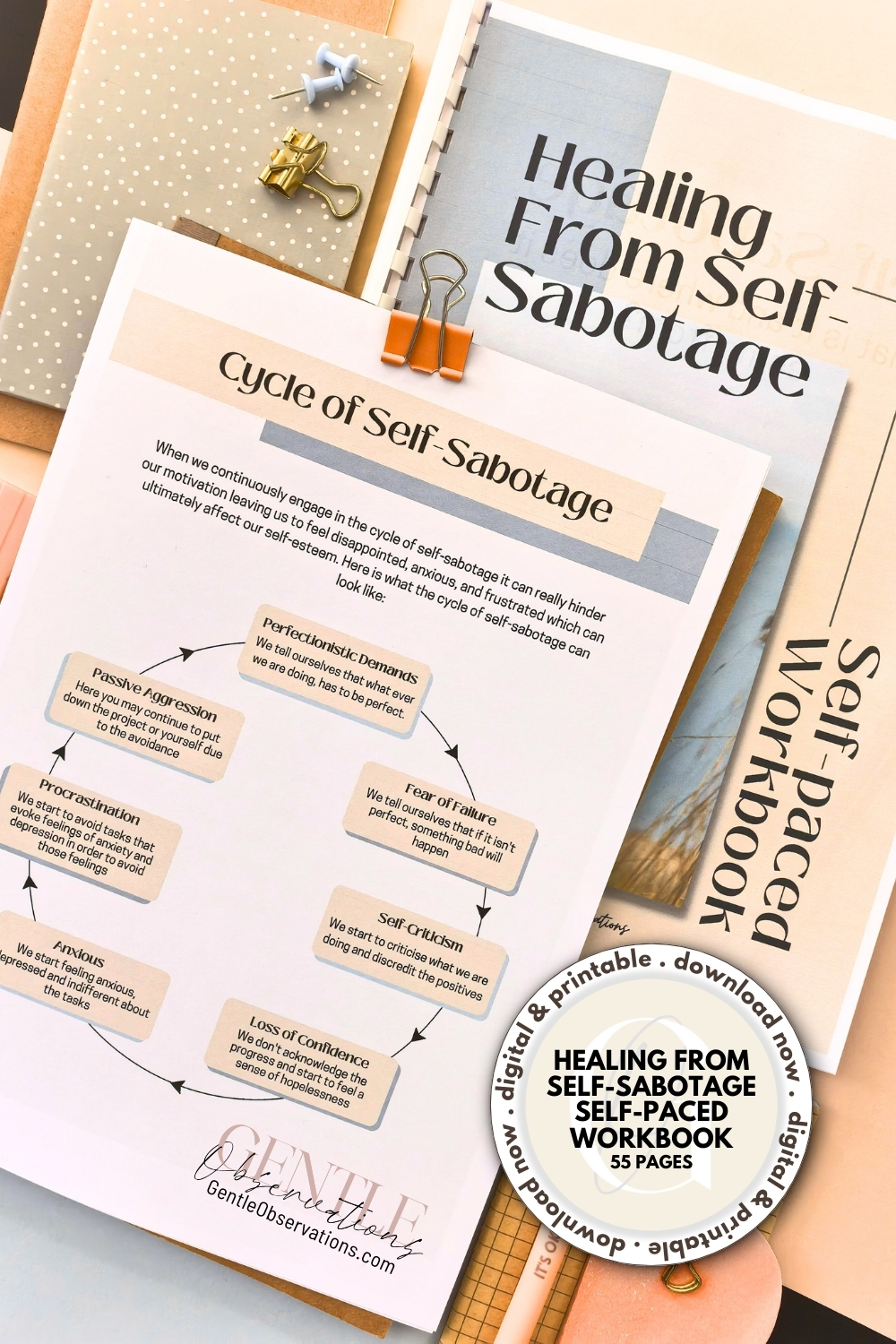

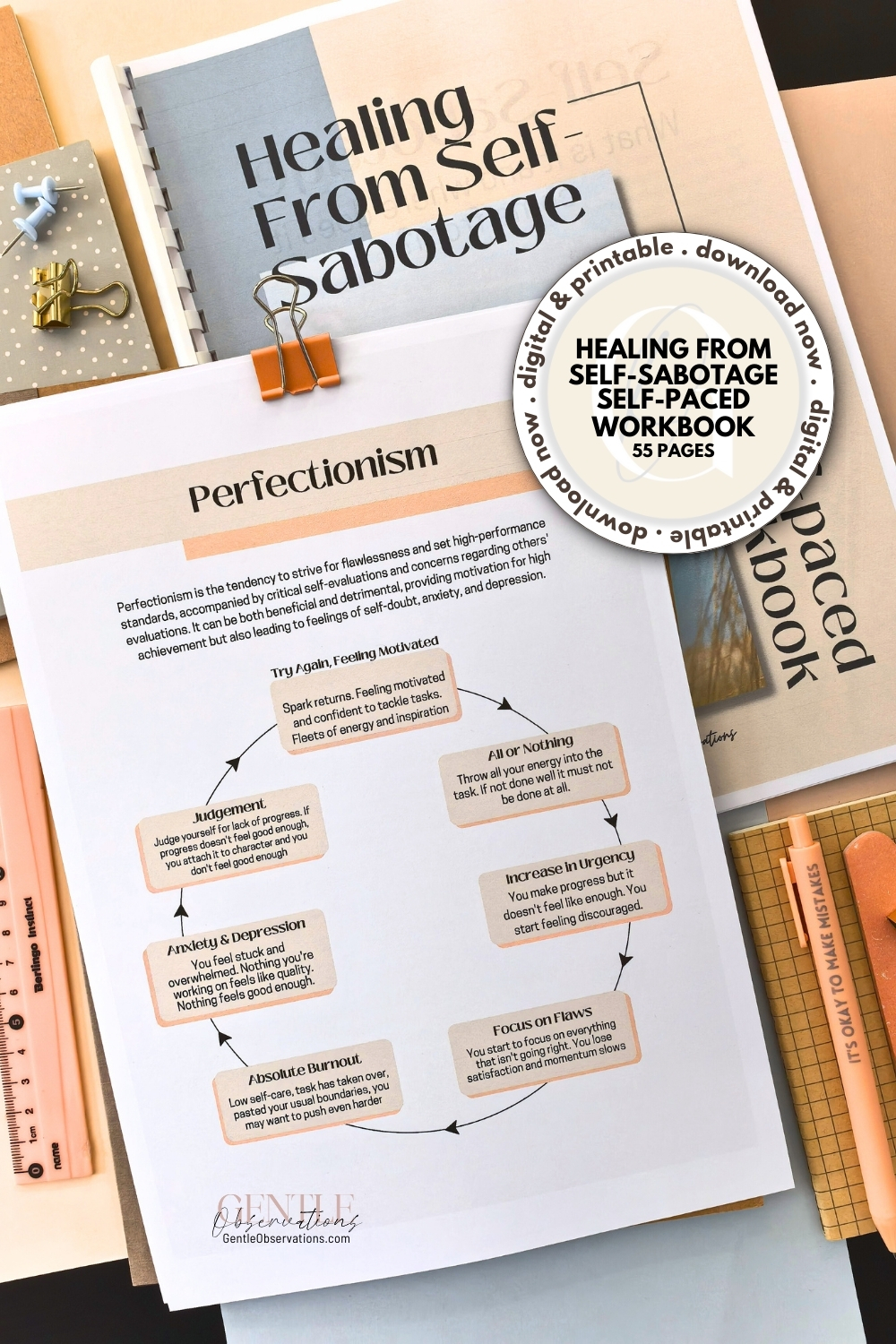

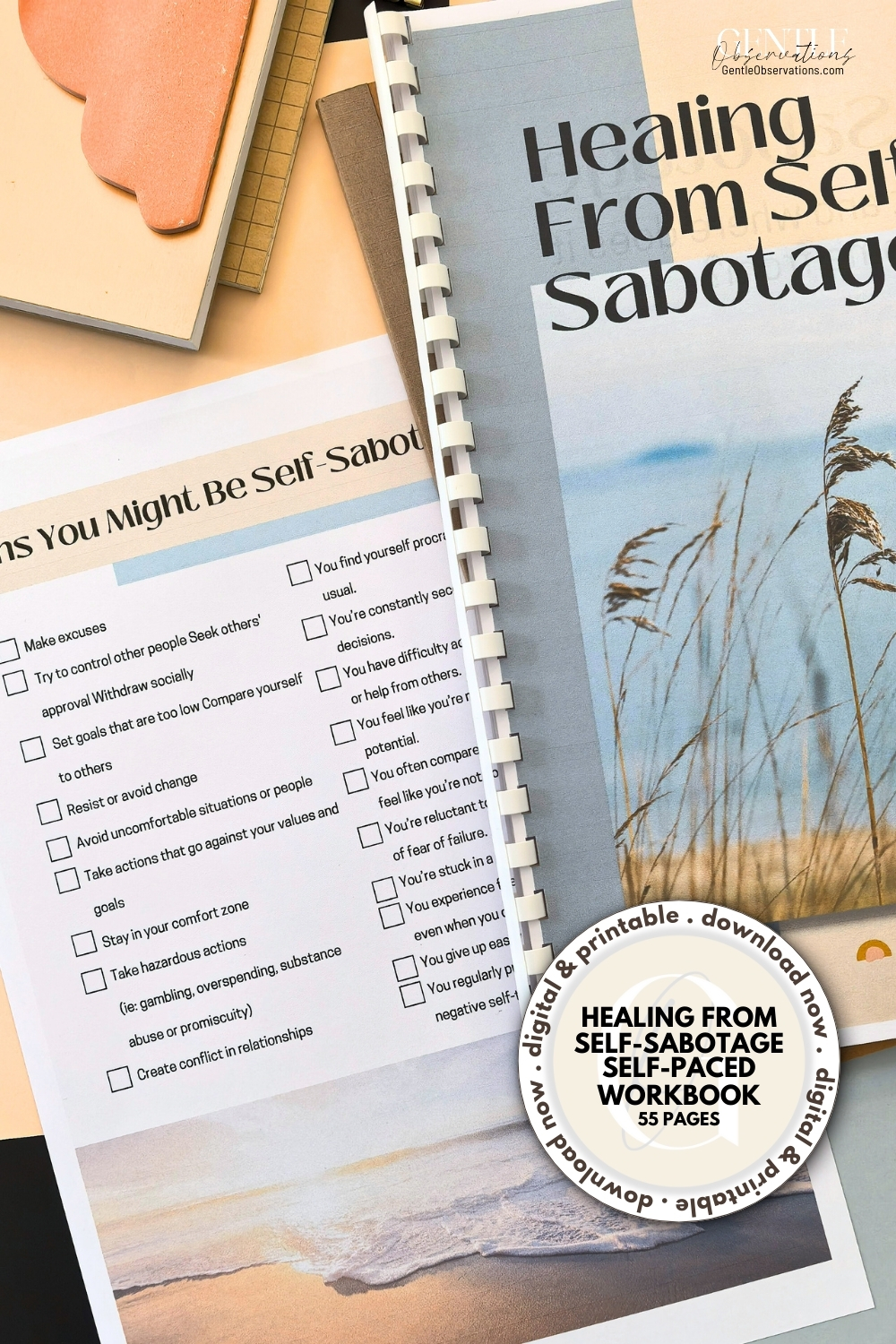

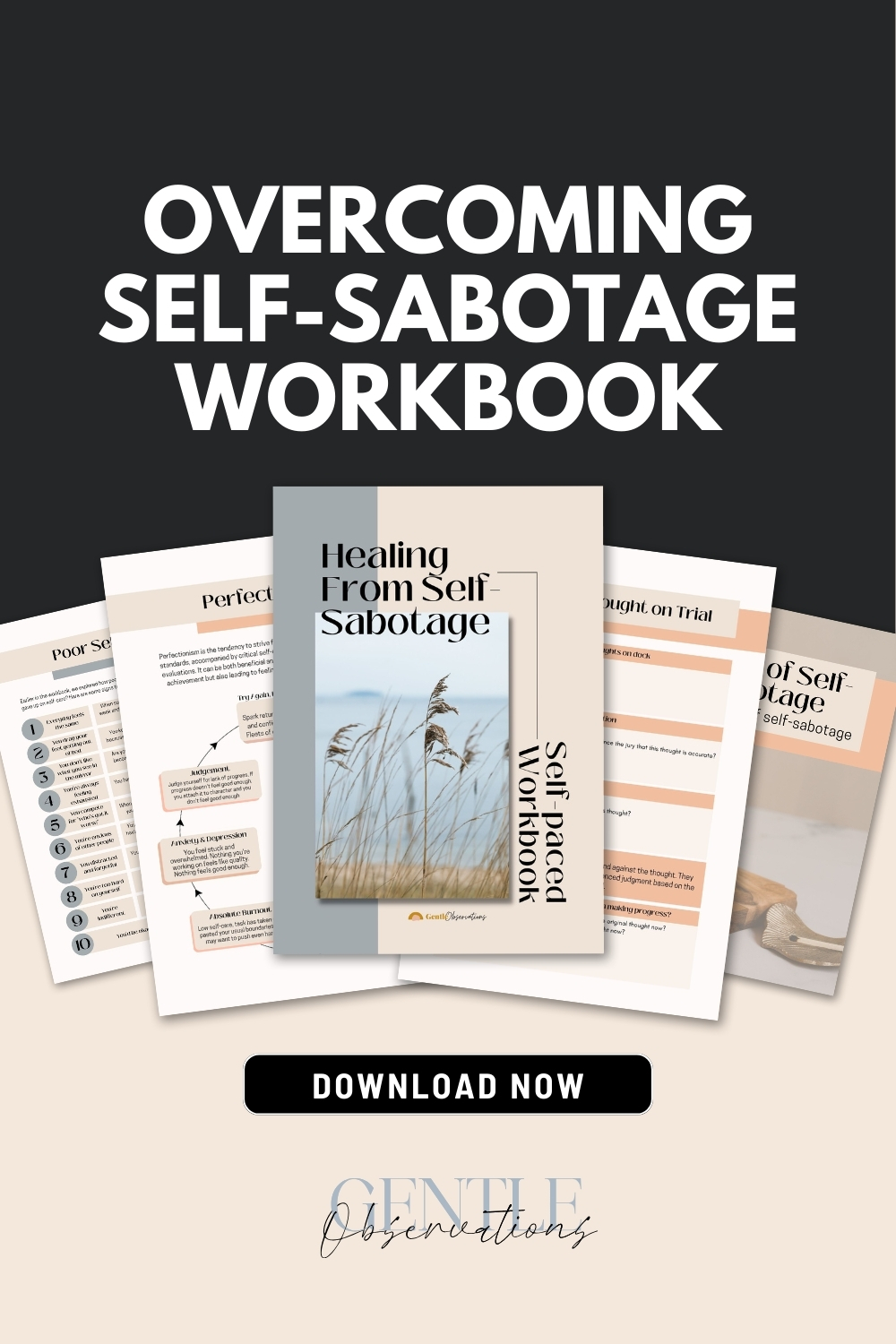








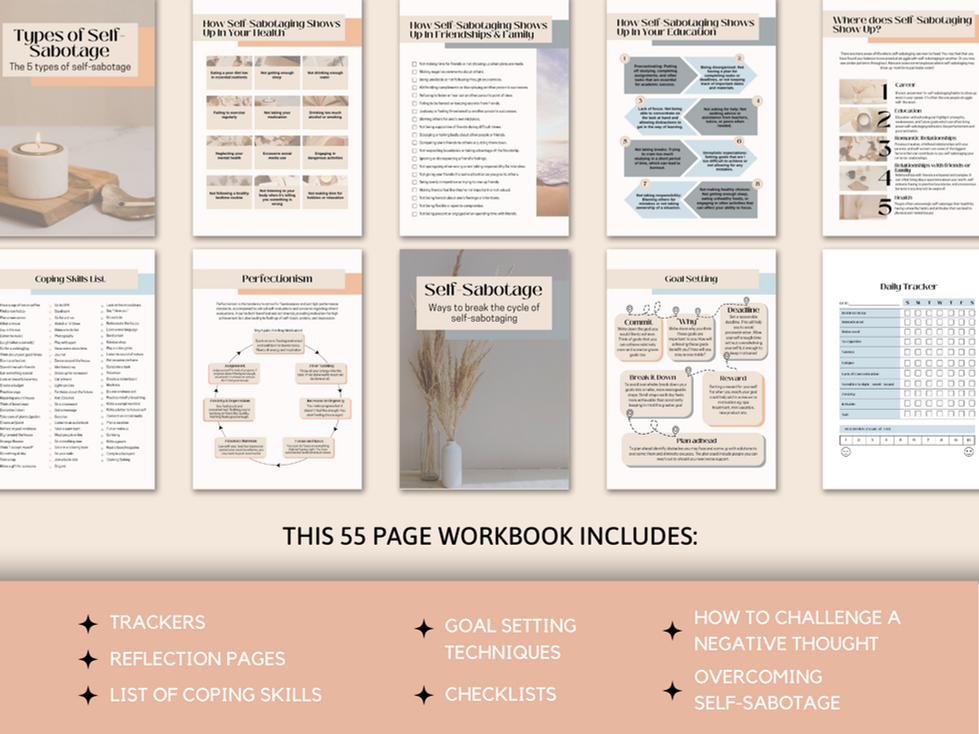





Comments